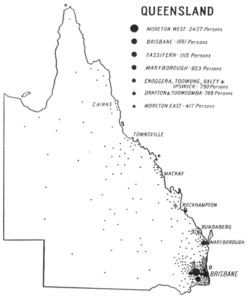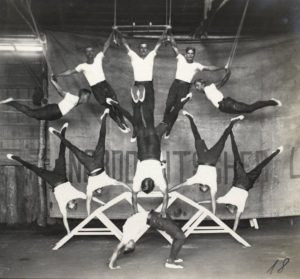2. Welcoming 25 Million Australia: Immigrants Have Made Us

Post 2 Welcoming 25 Milliion Australia: Immigrants Have Made Us
What’s for me to celebrate? The huge invisible hand of history moved millions around Europe after WW2, me and my family amongst them. Eastwards and westwards to and from France, Germany, Hungary and the Balkans and downwards from the Baltic nations and Poland. They moved from workers camps to return to their homelands or to refugee camps to emigrate. Some were simply repatriating, all wanted a new life. The huge hand moved my family from the continuing civil war repression in Yugoslavia to a refugee camp in Trieste. We fled with false Italian passports on a train of ethnic Italians being returned to Italy in 1951 and became UN Refugees.
In September 1952 we arrived in 8.6 million people Australia. After the refugee camp in Bonegilla near Eildon Weir in Victoria we moved to Geelong where the local Catholic school took in my older brother but not me because the nuns thought my parents had lied about my being 5 years old. Instead I went to the local State School and loved Australia from that minute. And so did my parents. It was the start of a freedom-from-fear experience they enjoyed till their deaths in their nineties.
I was born in Croatia but Australia made me! And I think I helped make Australia a tiny little bit in return. And my children are continuing to build a stronger and better Australia through their families and in their professions. Because of my migrant experience they consider themselves not only citizens of Australia but of a globalized world. And so do at least half of Australia’s population who are either immigrants themselves or children of at least one immigrant parent. Immigrants have made Australia.
What’s Australia to Celebrate? What’s the Big Idea? Sixty-six years later, on Wednesday 8 August 2018 the Reserve Bank of Australia Governor Philip Lowe delivered a rousing welcome to Australia’s population milestone of 25 million people. “Younger, smarter, richer, thanks to migration” read the headline reporting the speech in The Australian the next day. The nation’s growth rate of 1.5% a year, among the highest in the world, was a “basis for optimism about the future of our economy”. He said migration had raised our growth rate and helped our economy, helped us adjust to swings in labour markets and skills shortages, young immigrants had brought down our median age, reducing the proportion of aged people in our society relative to workers. Furthermore the students remaining in Australia after studying here were better educated than many Australians.
In 66 years from 1952 Australia had tripled in population and maintained high levels of prosperity despite tumultuous times.
George Megalogenis, a highly regarded economics journalist, in his highly acclaimed book Australia’s Second Chance What our history tells us about our future says “In the twenty-first century Australia staged one of the great recoveries in human history: from a nation to be pitied to one that is considered the envy of the world. No other economy has had a comparable winning streak to ours, and at a time of global instability. (In 2015) twenty four years have passed since our last depression…” He attributes this phenomenon mainly to immigration. Keeping it going depends on Australia remaining “the place the world wants be”.
Along with Philip Lowe and George Megalogenis I applaud vigorously this wonderful Australia I came to from war-torn Europe as a small child in the early1950s. My parents felt the freedoms and opportunities Australia offered immediately when they arrived, even in the migrant camp in Bonegilla. I experienced them later growing up. With relatives moving to the US and Chile I have been able to compare and contrast our life experiences. Australia came up best every time. And since the 1950s Australia has continued to absorb many more millions and give them the best lives the world has to offer. We’ve all managed to combine and amalgamate and create a unique admixture increasingly identifiable around the world as well as an Australian economic miracle. In 2018 Australia has arrived!
Do we loathe our prosperity because of an identity crisis? Questions of who we are, of who is Australian and who we should accept or reject as citizens are confronting. These identity questions are now swamping the debates on whether we should change immigration laws (and visa requirements for students and workers). Because there are always integration problems accompanying immigrants and people arriving from overseas to study and work here, there is soul-searching, little celebration. Many Australians simply want immigrants to integrate fast and disappear.
But integration takes decades and many immigrants don’t want to simply imitate, they want to innovate and contribute to the economy, the social fabric, the culture and arts and music, and the food. And Australia’s record in achieving integration and changing itself by absorbing other cultures especially cuisines (eg a coffee culture) is legendary. When I studied a Harvard sociology subject I remember the eminent professor Lee Rainwater saying over and over again “but you should know the answer, Australia has done immigration more successfully than anyone else on earth”.
In my trip back to Hercegovina with my father in 1991, his first trip back after leaving in 1951, I was delighted to hear him tell the young Croatian priest in the village church that it was silly and old-fashioned to have women sitting on one side of the church and men on the other: “that’s not what we do in Australia”. I suspected he was going back to have a look at whether he might return and live there. He instead decided Australia was home now and he returned, a huge decision for him, a strong Croatian patriot.
Legal maneuverings don’t work The Federal Government is considering introducing new laws specifying what a good immigrant looks like, what qualifications our economy needs, raising the English language test and requiring immigrants who arrive on “living in regions” visas to stay there longer. I’ve experienced first hand the social distance that inevitably exists between newly arrived immigrants and their hosts. It often arises because immigrants tend to cluster – around one another and in the purchasable housing available to them.
Scapegoating of recent immigrants happens, over and over Despite Australia’s direct recruitment of hundreds of thousands of European migrants under its “Populate or Perish” policies in the 1950s and 1960s, proportionally the biggest influx of migrants ever, many southern European migrants were denigrated and discriminated against in employment and housing and social participation. Around me in Geelong and Melbourne which had the second largest Greek population in the world after Athens, these migrants were openly called wogs, dagos, eyeties, greaseballs,poms, balts and wops. Swarthy southern Italians were denigrated even by northern Italians.
Nonetheless slowly southern Europeans were absorbed and MultiCultural Australia was born. In the 1970s Vietnamese immigrants were scapegoated. Then Lebanese, other Asians and more recently Africans and Middle-Eastern Arab nationalities were derided. Now in the 2010’s it seems to be Muslims, Indian and Sudanese gangs in Melbourne who bear the brunt of the race-speak and clamour for government action. On 16 August 2018 accidental Senator Fraser Anning showed that even the worst of extreme views still exists when he called for a “Final Solution” to the Muslim problem. One other parliamentarian agreed but overwhelmingly the rest, even Pauline Hansen, condemned him.
Are we there yet?Australia has well functioning evidence-based policies What is perfectly clear and overrides everything else is that Australia has got immigration right. Australia has benefitted and immigrants have reciprocated the benefits they’ve gained over and over again. Immigration over the last sixty years since the White Australia policy was killed off has worked brilliantly! Australia doesn’t need any new immigration policies. Australia has nailed it!
What’s to fear? Per capita GDP? Deficient infrastructure & housing? Many Australians disagree with the 539,000 people the Australian Bureau of Statistics says immigrated in 2016/17. But this includes temporary visa holders (workers and others), students and working holiday makers. And when the 276,000 people who moved overseas are taken away, net overseas migration was 262,000 people, below the level of 300,000 in 2008/09.
In The Australian 9/8/2018, Judith Sloane (whose opinions I usually respect) says that while immigration might drive GDP growth, it doesn’t drive GDP growth per capita. Philip Lowe, she argues is wrong and is not an immigration economist. We need more infrastructure and shouldn’t foist the cost on to future generations. I’m not an immigration economist but don’t we need to update our infrastructure in any case, with or without immigrants? And naturally when GDP is divided into a larger population the fraction per head is smaller, but the total growth is still significant.
Never Fear, Infrastructure Australia is here! Hasn’t there always been pressure on our cities receiving immigrants? Isn’t it Australia’s affluence, favourable tax treatment and low interest rates which have pushed house prices up more than anything else? Aren’t we already planning for infrastructure improvements? Don’t our taxes pay for infrastructure? Aren’t more migrants likely to be working age people who work and pay taxes more than the general population?
Since 2008 we have had Infrastructure Australia, a federal agency listing $55 billion of nation-shaping projects. IA has already removed $25 billion projects from its lists because they are underway. In Melbourne and Sydney there are many high priority projects in plan in the next 0-5 years to relieve urban congestion. Have a look on this link https://ia-priority-list.herokuapp.com/pdf
The Joys of City Living are Increased with Newcomers Megalogenis says the benefits modern day immigrants bring about in Australia will be more profound than those brought by postwar waves from southern Europe and South-East Asia. With the extraordinary growth of economic activity in Sydney and Melbourne over the past ten years those profound changes have started. In April 2018 the world’s foremost expert on the economy of cities Harvard professor Edward Glaeser said Sydney and Melbourne could have much denser populations to benefit their economies without compromising quality of life. “If there’s one country in the world that doesn’t need to worry about adding more people, it’s got to be Australia”. In his latest book Triumph of the City, Glaeser calls cities our greatest invention and says they not only make us richer and smarter through making us more relationship-intensive, they also make us greener, healthier and happier…Big cities are fun”.
Cleveland and the Redlands: Another immigrant story In its 8 August editorial The Australian said “It’s not so much about how many come but who they are, the qualities they bring and where they settle” and went on “…a declining, ageing population and a lack of economic stimulus are the besetting problems of many regional centres that will die without new blood”. Anecdotally some regional centres are reinvigorating with immigrants. Although Cleveland isn’t a regional centre, it’s not a proper suburb of Brisbane either. It’s the last station on Brisbane’s eastern train line but it has the feel of a separate village. Cleveland has the feel of being on the brink of staying as a country town or springing into life as an urban residential area.
The Redlands around Cleveland have an illustrious immigration history with colonial Australians from other areas living together with large numbers of Germans who farmed the Mt Cotton area from the 1860s, later with the help of South Sea islander workers. The Redlands areas in Mt Cotton and Sheldon south of Cleveland are still predominantly rural. A significant proportion of farmers were originally German and many of their progeny still farm these lands. A local historian told me that in the 19thcentury the Queensland Government sent recruiters to several German provinces to invite farmers to till their newly-opened lands. The Germans were mainly Lutherans who were numerous enough to build a church in 1875 and a part-time school in 1876. In 1884 it was replaced by the Mt Cotton State School which is still going today.
In July 2018 Redland City Council named a new park: Dan Holzapfel Park in honour of a 95 year old descendent of one of the original German families who had been a farmer, Councillor and philanthropist, a graduate of Mt Cotton State School, a nation creator and national treasure and child of immigrant parents.
South African Cluster Since I arrived here in Cleveland in 2014 I’ve discovered a new cluster of present day immigrants: South Africans. I’ve now accidentally met six of them socially and in business. These accidental findings were borne out by 2016 Census figures for Cleveland which show South Africa is the third highest group born overseas after England and New Zealand. They comprise 2% of Cleveland’s population, three times the rate of 0.7% in Australia as a whole.
What’s the reality? What is sustainable? The reality is we’ve done successful integration over and over again. Why not keep going? Going back to where the problems are and fixing them is what we’ve been doing for decades and what Infrastructure Australia is helping us do right now. All around us I see growth and progress and quality of life enhancements.
In 2009 when I was grappling with the then relatively new concept of sustainability I asked an eminent Professor of Environmental Science: what is sustainability? How is it defined? How do we achieve it? He answered if something works, if it survives, it’s sustainable, if it fails it’s not. I think we can safely say that Australia’s immigration programs have worked and that they have survived. Sustainability is here! We’ve done it. Can we continue as the place the world wants to be?
Germans in Queensland in the 19th Century

